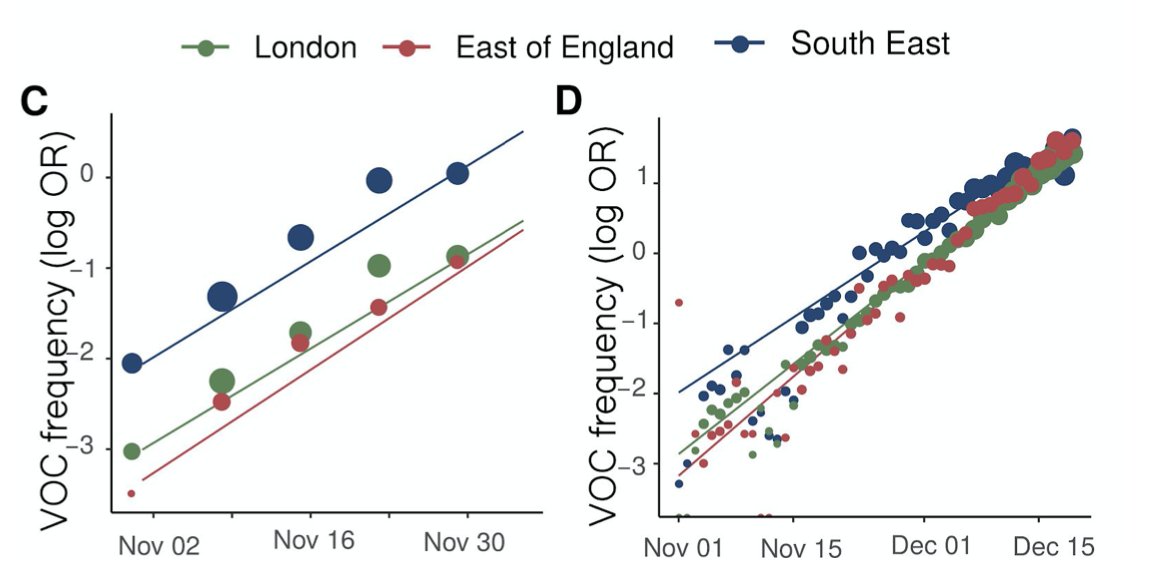
In the latest @PHE_uk Technical Briefing we see the #b117 variant of concern continues to spread throughout England, get bigger numbers on the secondary attack rate analysis, and see a glimpse of planned virology experiments to come. 🧵assets.publishing.service.gov.uk/government/upl…
Using the S-gene target failure (SGTF) as a proxy (details in previous reports, updated in this report) we can see that as of January, #b117 is more than half of new infections almost everywhere in England. Of all TaqPath tests in the UK in the past few days >75% are #b117. 

The SGTF data allows analysis of 2ndary attack rate in about half a million contacts of infected people. It is consistently 40% higher for #b117. This isn't a fully matched cohort, but is pretty compelling that the new variant transmits more readily in typical contact situations.
No virology (i.e. experiments on the new variant of the virus in a lab) yet, but a schematic of what will be done in coming weeks: 

All of this is consistent with the emerging picture of #b117: more generally transmissible, sweeping through the whole UK. Hopefully more on biological characteristics soon, to complement the recent good news on vaccine efficacy against 501Y in particular.
• • •
Missing some Tweet in this thread? You can try to
force a refresh






